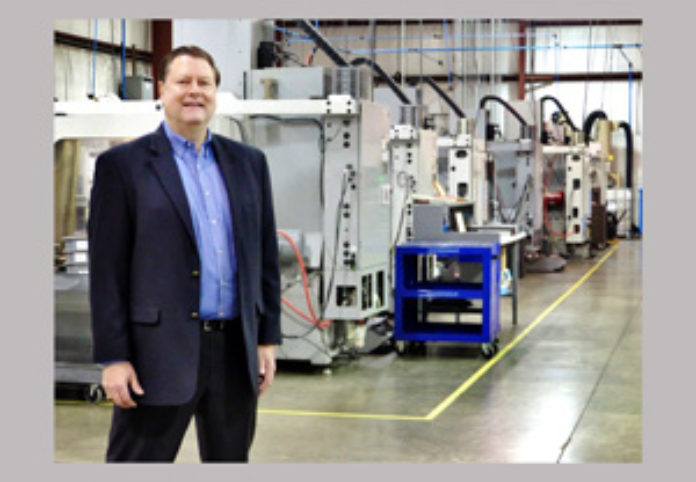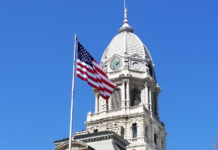Despite seeing the Big Three – DePuy, Zimmer and Biomet – shrink to two in a 2014 merger, Warsaw’s renowned orthopedic cluster appears to be in growth mode, and there is heightened optimism with the arrival of President Donald Trump and the Republican-controlled Congress.
The orthopedic industry already was showing strength in 2016, and local officials believe it will continue as the industry gains notoriety as a magnet for innovation.
The industry’s storied beginnings date to 1895, when Revra DePuy launched DePuy Manufacturing Co. Twenty-one years later, the first of numerous “peel-offs,” in which entrepreneurs launched their own companies, started when Justin Zimmer left DePuy and launched Zimmer.
Another major spin-off with local roots came in 1977 with the establishment of Biomet. Within a few years the city cemented its reputation for manufacturing more than half of all hips and knees sold in the United States.
Since then, consolidation has transformed the industry.
Aside from the 2014 Zimmer Biomet merger, acquisitions in recent years have bolstered the local industry.
Sofamor Danek, a longtime leader in spinal products, was acquired by Medtronic, the leader in cardiac rhythm disease management and diabetes-related healthcare. Now, Medtronic has a manufacturing facility along U.S. 30 that employs upward of 500 people.
In 2012, DePuy’s parent company, Johnson & Johnson, acquired Synthes, the leader in fracture fixation, for a reported $19 billion and merged it with DePuy, making the combination the world’s biggest orthopedic company.
Today, local orthopedics employ about 7,700 people. Add to that a handful of firms in Whitley and Allen counties, and the region’s orthopedic workforce is close to 10,000, according to Brad Bishop, executive director of OrthoWorx.
In addition to retaining a huge portion of the domestic market, officials believe 33 percent of the global orthopedic industry is based in Warsaw.
Earlier this month, newly elected Gov. Eric Holcomb, in his state of the state, made note of Warsaw in his highlights of the state’s economy, calling it the “Silicon Valley of orthopedics.”
“It’s such an outsized industry for the area of Warsaw. It’s really an anomaly anywhere,” said Lori Leroy, a spokesperson for BioCrossroads, which works with bioscience companies in Indiana.
“It’s a beautiful, beautiful thing,” she said.
Some officials believe the orthopedic capital of the world is poised for more growth.
Bishop calls 2016 a year of improvement for the industry as the economy improved.
Some recent highlights:
• Banner Medical opened a 42,000- square-foot state-of-the-art material processing center along U.S. 30 last summer in Warsaw’s new tech park. The company was eager to have a presence in Warsaw and received $725,000 in conditional tax credits from the state.
The Illinois-based company employs about 25 people, but that number will rise as the company ramps up its operations.
• Nextremity Solutions, a nine-year-old New Jersey company, moved its headquarters to Warsaw two years ago and established a global distribution agreement last year with Zimmer Biomet, giving it broader exposure to their foot and ankle products.
• Owl Manor Veterinary, a veterinary medical device company, specializes in soft-tissue and joint preservation technology for horses and dogs. The company moved to Warsaw with plans to invest $800,000. It is led by several executives with ties to local orthopedic companies.
Four years ago, Micro Machine Co., based in Kalamazoo, Mich., arrived in Warsaw and invested $2.5 million in new equipment in its plant on Corridor Drive.
Andrew Miclot, president and chief executive officer, said the orthopedic supplier grew by 20 percent in 2016.
Mega Merger
For Zimmer Biomet, 2016 was the second full year since the $13 billion acquisition of Biomet.
The company declined to say how many jobs were eliminated, but Zimmer continues to use Biomet’s longtime manufacturing facility along U.S. 30, and the impact seems to have been minimal compared to many other mergers.
Bishop – a former employee of Zimmer who left years before the merger – said the fallout could have been much worse.
“Of all the things that could have happened, this seems to be pretty favorable,” Bishop said. “From that standpoint, I think it’s gone as well as it can.”
The merger appears to have had an unintended benefit — one that could spur more growth and innovation, according to Nick Deeter, a former Zimmer employee who founded two local orthopedic firms.
Deeter points out that many of Biomet’s top executives were let go in the merger and given large compensation packages in the millions of dollars.
The result has been a “significant amount of talent that’s available and looking for something new and fun to do,” he said.
“That’s a phenomena I’ve never seen in the industry before,” he said.
Meanwhile, company representatives foresee an even brighter future with changes coming out of Washington, D.C.
Legislative Impact
On the campaign trail, Trump advocated for corporate tax reform and regulatory reductions, both of which could benefit the industry directly. The most anticipated change, though, is the killing of the medical device tax, a key part of the floundering Affordable Care Act.
The tax was suspended a year ago, and after paying the tax for three years, industry officials are eager for its demise.
Chris Cerone, vice president of global government affairs for Zimmer Biomet, said last month that the tax has been a drag on innovation and undermines global competitiveness. Ending the tax permanently will give the industry a big boost.
“I think it will unleash a lot of innovation,” he said during a media event when Sen. Joe Donnelly visited Zimmer Biomet to tout the legislation.
“It will give us the certainty and confidence to make longer-term investments,” Cerone said.
Overall, the combination of policy changes represent a “net positive” for the industry, according to Bishop.
“I don’t see significant downside in any of the rhetoric. The proof is in the sausage making, so we’ll have to see how it goes,” he said.





